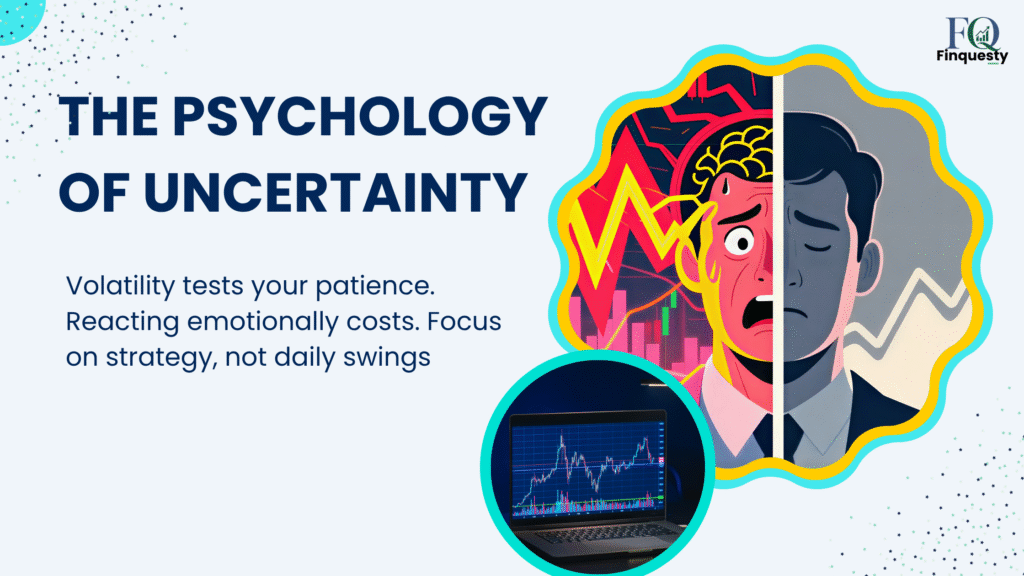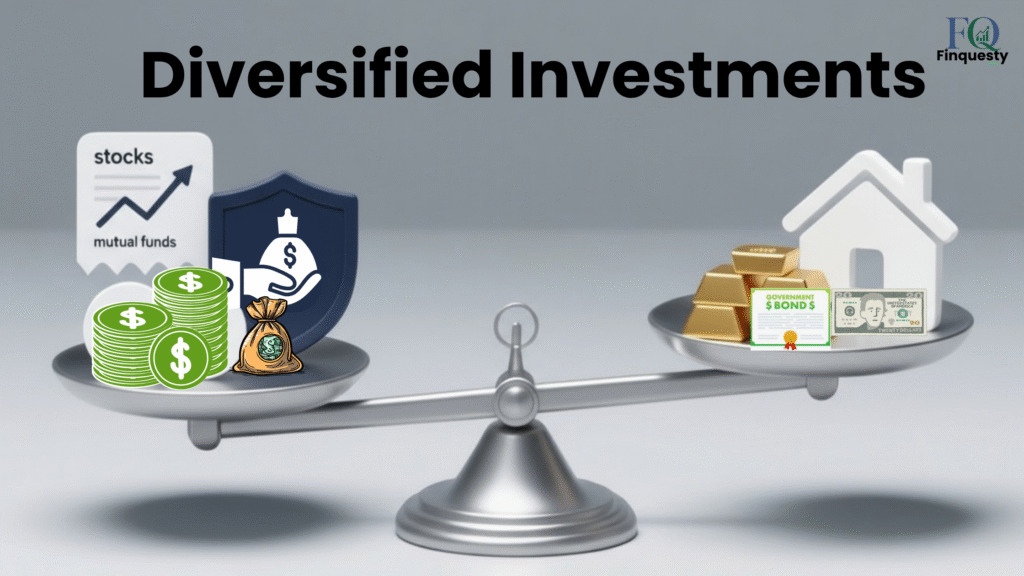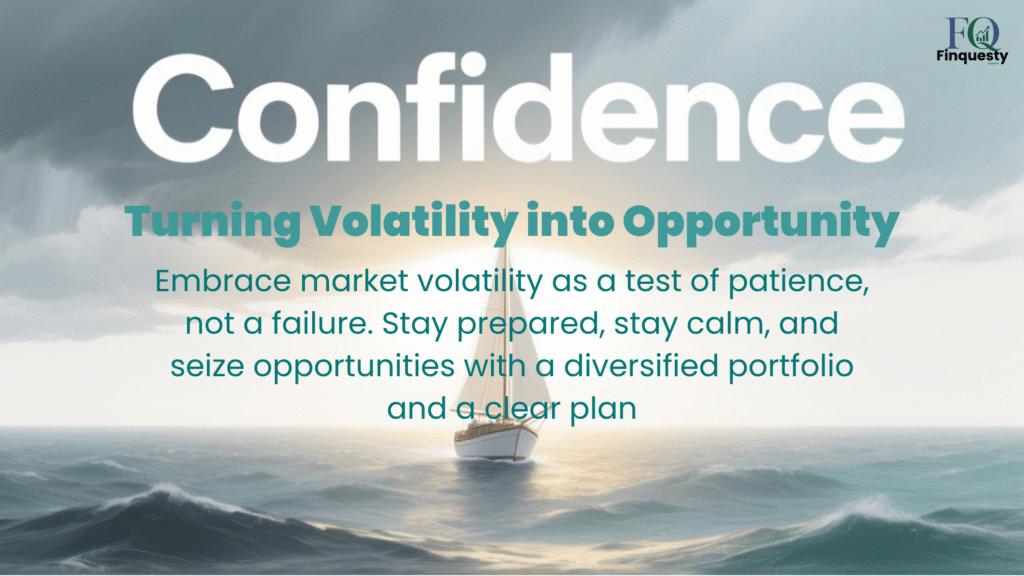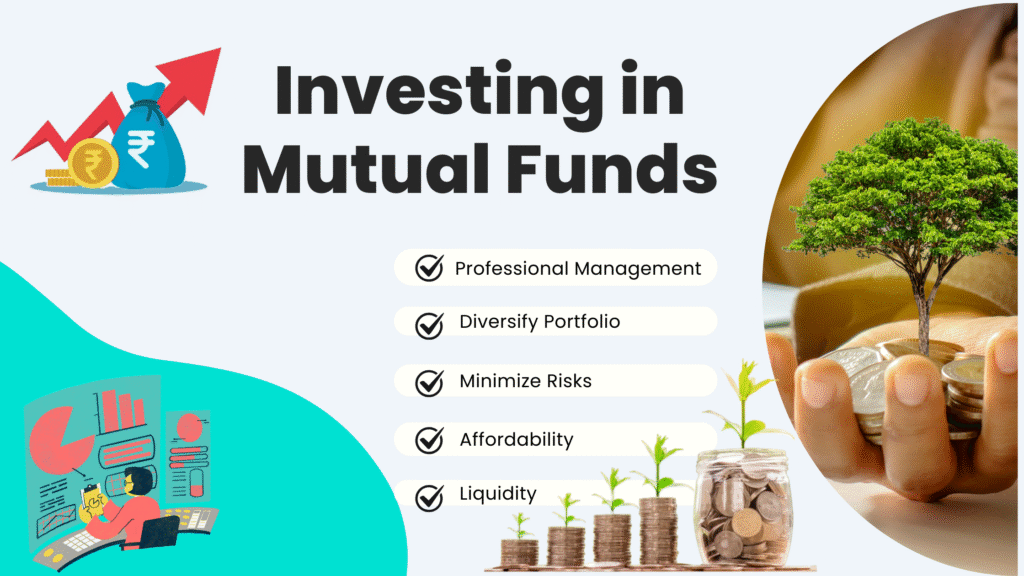Imagine that you are waking up to headlines screaming about a market meltdown. The Sensex is 700 points down overnight, social media are flooded with panic, and analysts are debating whether this is “the next 2008.” For many investors in 2025, this isn’t a hypothetical, it’s Déjà vu.
Earlier this year, a tariff shock in April triggered a global sell-off. Indian equities felt the tremors: Foreign investment flows turned wary, rupee volatility spiked, and the VIX (Volatility Index) across global markets jumped to pandemic levels. Amid sticky inflation, ongoing trade tensions, and economic uncertainty, have kept investors on edge. And as history reminds us that October often brings heightened market volatility from 1987’s Black Monday to 2008’s financial crisis.
Market volatility can be one of the worst feelings as if it’s a personal attack on you. But in reality, volatility isn’t the true enemy, it’s the way we perceive and react to it. Volatility is an integral part of the financial journey and in fact, it brings the test of patience and the opportunity of success. The hardest part here is the challenge to control your emotions, keep yourself updated with the market information and still have faith in your long-term plan.
Understanding Market Volatility
Market volatility basically refer to a situation where the prices of assets change quickly and unpredictably. It’s often measured by the Volatility Index (VIX), which reflects the market’s expectations of short-term price fluctuations based on Nifty options. When volatility arises, there is a great deal of price fluctuation made occasionally stemming from a fusion of economic data, investor expectations, and global events. However, market volatility isn’t inherently bad per se. To a large extent, volatility could be seen as a logical consequence of a market unravelling new information.
What Causes Volatility?
Several underlying factors play a key role in driving market volatility.
Economic indicators
Inflation, GDP growth, and interest rates play a huge role to trigger market volatility. For instance, when the Reserve Bank of India (RBI) escalates repo rates to tame inflation, investors by and large become risk-averse, resulting in short-lived market downturns.
Global developments
The price of crude oil going up, geopolitical conflicts or the US Federal Reserve decisions are events that greatly affect the mood of the foreign investors and hence the situation of the Indian markets. Recently in August 2025, the US decided to impose a tariff of up to 50% on a broad range of Indian goods with the intention to both penalize exports and help fix the trade imbalance. This move hit sectors like textiles, gems, and chemicals and made them very volatile. Nevertheless, the markets powered on later and showed their resilience.
Investor Psychology
Investor’s behaviour is the main factor behind market volatilities. For example, fear leads to panic selling, whereas optimism triggers speculative buying. Joining the bandwagon or herd mentality often makes small market corrections become disaster-level crashes.
Why Volatility Is a Normal Part of Investing
Market volatility often gives a feeling of discomfort, but it is completely normal. The Sensex, for instance, has gone through multiple corrections – from the 2008 financial crisis to the COVID-19 crash in 2020, but it has always bounced back stronger with time.
During the pandemic panic, the Sensex was fell below 27,000 points in 2020. However, it reached over 70,000 within three years. Investors who kept their money invested or even increased their contributions were the ones to be rewarded for their patience.
Market volatility might be compared with flight turbulence, which is an unpleasant situation, but it is temporary phenomenon. The main thing is to stay seated with your seatbelt (financial plan) on.
The Psychology of Uncertainty – How Emotions Impact Financial Decisions

Besides shaking portfolios, market volatility also tends to shake people’s emotions. Fear and uncertainty may dominate one’s judgment quicker than prices that are falling.
According to behavioural finance, this is called “loss aversion” – the characteristic of fearing losses more than loving equivalent gains. Another common pitfall is “recency bias”, when recent events (e.g., a market drop) make us think that the trend will last indefinitely.
How about this: You have been investing through SIPs regularly for the last two years. Out of the blue, Nifty drops 8% in a week. You get scared, stop your SIP, and take out part of your investment. Later, the market comes back, but you have already made your losses final.
The main thing is to understand these feelings and not to be impulsive in your reactions. Investing should be done rationally rather than emotionally. If one thinks of the volatility as a “discount sale of excellent assets”, it helps him to change his point of view. Keeping a record of investment decisions, being mindful, or simply being away from the news constantly can help one to be less emotional and more strategic.
Practical Strategies to Manage Market Volatility
When markets becomes volatile, don’t react impulsively, act strategically.
Revisit Your Financial Goals
Market volatility should not influence your investment strategy, but your goals should. Short-term goals (within 2 years): It’s better to keep them in safe instruments such as fixed deposits or liquid funds. Medium- and long-term goals (5–10+ years): Stay with the equity or hybrid options. When you have clarity on why you’re investing, you are less likely to lose control during market volatility.
Diversify Your Portfolio
Investments must be spread over different areas rather than stocks alone. They should be spread over stocks, mutual funds, bonds, real estate, and commodities. A well-balanced portfolio, for example, 60% equities and 40% fixed income, has historically lowered volatility by 30-50% while still delivering attractive long-term returns.

Diversification lowers the risk without sacrificing returns. For instance, in a situation where the technology or growth stocks weaken (as was the case in early 2025), the bond market and the defensive sectors usually offer the needed stability and help lessen the impact of the volatility.
Avoid Emotional Trading
If you were to react to every market fall in the same way as if you were to change your driving direction each time a car honks, you would be inconsistent and ineffective in both actions. Follow through with your plan. Do not give in to the selling of your assets in a state of panic or overbuy during the hype phases. As Warren Buffett put it very wisely, “When others are greedy be fearful and when others are fearful be greedy.” Before you sell, think about it: “Are the fundamentals of the company changed, or am I just frightened?”
Use SIPs and Rupee Cost Averaging
Systematic Investment Plans (SIPs) are probably the most intelligent instruments an investor can have at his disposal. When markets are unstable, SIPs will on their own purchase more units when prices are low and fewer when prices are high. This method, which is called rupee cost averaging, assists in decreasing your average cost and increasing wealth gradually.
For instance: Investors who kept up with their SIPs even during the 2020 market crash, were the ones who had the best returns in the long run after the market recovery.
Keep an Emergency Fund Ready
Volatile markets are the times when we understand that world is full of uncertainties. Having an emergency fund that can cover at least six months of your basic needs will make you feel comfortable and you won’t have the urge to do a forced selling of the investments you’ve made in panic. The money you have set aside as a rescue fund should be kept in your saving account or a liquid mutual fund pocket so that when the need arises, you can quickly access it. The fact that you have a rescue plan in place gives you a certain mental strength.
Seek Professional Advice When Needed
When trying to rebalance your portfolio, feeling overwhelmed or doubtful of your decision, it is better to seek the opinion of a certified financial planner. A professional can evaluate your risk appetite, recommend the proper asset mix, as well as do it emotionally unbiased while ensuring that your investments are congruent with your goals.
Long-Term Mindset – Turning Volatility into Opportunity
Market declines are usually the best times to pump more money into the market. Basically, when stocks plunge you get to buy solid stocks or mutual fund units at a very attractive price. In fact, the annualized returns made by those who kept rupee-cost averaging into index funds in the middle of the 2020 crash were, in many cases, well above 15% by 2023.

Never forget this very important investing principle: “Time in the market beats timing the market.” Not a single person from analysts to experts can accurately pinpoint market highs or lows on a consistent basis. Compounding works best when you stay invested.
Short term market noise should not be able to disturb you if your goals are set 10 or 15 years down the road. Don’t get dragged into daily fluctuations, concentrate on long-term growth.
Building Confidence as an Investor
Develop Financial Literacy
Being knowledgeable is the main source of power that finance holds. One good thing about understanding the inner workings of the market is it brings less fear and more confidence.
Learn by doing: reading financial blogs that you trust, reading more books such as “The Psychology of Money” by Morgan Housel, to understand the basics of asset allocation and risk management.
The more you know, the less likely you will be influenced by your emotions to make financial decisions.
Track Progress, Not Perfection
There is absolutely no reason for you to daily monitor your portfolio. You may be doing it on a quarterly or biannual basis and during these times, you should check whether your asset allocation is still in line with your goals or not. There is no doubt that markets will go up and down, however, your main focus should be on gradual progress instead of daily perfection.
Stay Informed, Not Overwhelmed
Being updated is definitely a good thing, however, too much financial news might make you anxious. Informed and being overwhelmed are two different things.
For instance: Use the information coming from The Economic Times, Moneycontrol, or Mint. Refrain from sensational headlines and social media panic posts.
If you focus on facts instead of fear, then you will be able to keep yourself calm in difficult times.
Conclusion – Growing Through Uncertainty
We can’t escape the possibility of financial uncertainty; however, it doesn’t have to be something that scares us. Market volatility shouldn’t be seen as a failure rather, it should be seen as a test of patience and perspective. To a disciplined investor, every market correction is a gateway to new opportunities. Preparation is where confidence stems from — this translates into having a well-thought-out plan, a diversified portfolio, an emergency fund, and a composed mind.
Hence, it makes sense to calm down with a deep breath whenever the Sensex is going down or the panic-inducing headlines are coming. Keep your eyes on your long-term voyage and not the rough patches along the way.
The essence of financial success is not in forecasting the future, rather, it is in being ready for it.




Very nicely explained. Most of the investors gets panic in the fall and sell move out from the market based on impulse and misses the opportunity to create more returns. This article explained what to do in the case of market fall and not take decision on impulse.